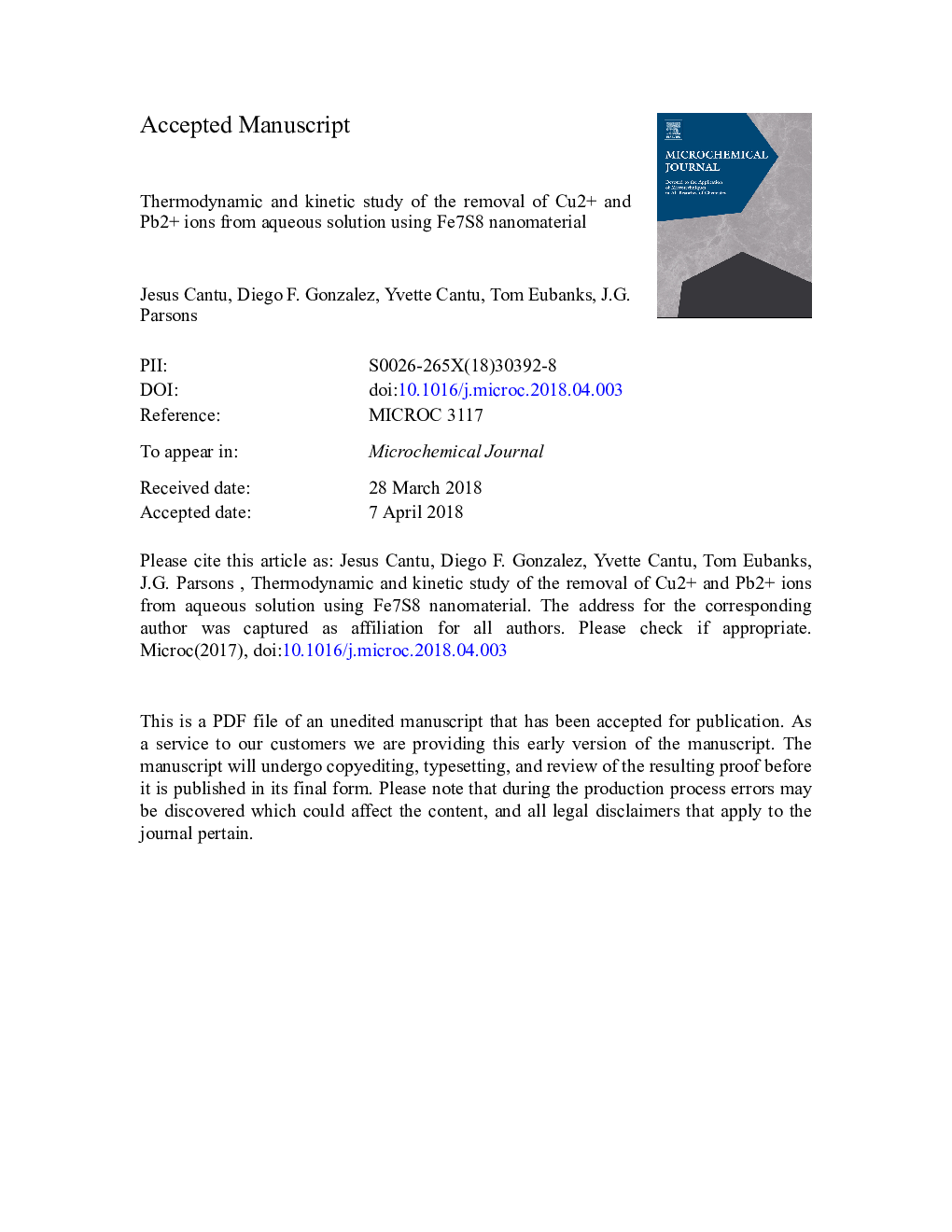| Article ID | Journal | Published Year | Pages | File Type |
|---|---|---|---|---|
| 7640380 | Microchemical Journal | 2018 | 33 Pages |
Abstract
In the present study, pyrrhotite (Fe7S8) was investigated for the removal of Pb2+ and Cu2+ ions from aqueous solution. The Fe7S8 material was prepared through a solvothermal method and was characterized using XRD. The average particle size for the nanomaterial was determined to be 29.86 ± 0.87 nm using XRD analysis and Scherrer's equation. Batch studies were performed to investigate the effects of pH, time, temperature, interfering ions, and the binding capacity of Pb2+ and Cu2+ ions to the Fe7S8 nanomaterial. During the pH profile studies, the optimum pH for the binding of Pb2+ and Cu2+ was determined to be pH 5 for both cations. Isotherm studies were conducted from which the thermodynamics and binding capacities for both Cu2+ and Pb2+ were determined. The binding capacity for Pb2+ and Cu2+ binding to the Fe7S8 were determined to be 0.039 and 0.102 mmol/g, respectively at 25 °C. The thermodynamic parameters indicated a âG for the sorption of Pb2+ ranged from 5.07 kJ/mol to â2.45 kJ/mol indicating a non-spontaneous process was occurring. Whereas, the âG for Cu2+ ion binding ranged from 9.78 kJ/mol to â11.23 kJ/mol indicating a spontaneous process at higher temperatures. The enthalpy indicated an endothermic reaction was occurring for the binding of Pb2+ and Cu2+ to the Fe7S8 nanomaterial with âH values of 55.8 kJ/mol and 153.5 kJ/mol, respectively. Furthermore, the âS values for the reactions were positive indicating an increase in the entropy of the system after metal ion binding. Activation energy studies indicated the binding for both Pb2+ and Cu2+ occurred through chemisorption.
Related Topics
Physical Sciences and Engineering
Chemistry
Analytical Chemistry
Authors
Jesus Cantu, Diego F. Gonzalez, Yvette Cantu, T.M. Eubanks, J.G. Parsons,
